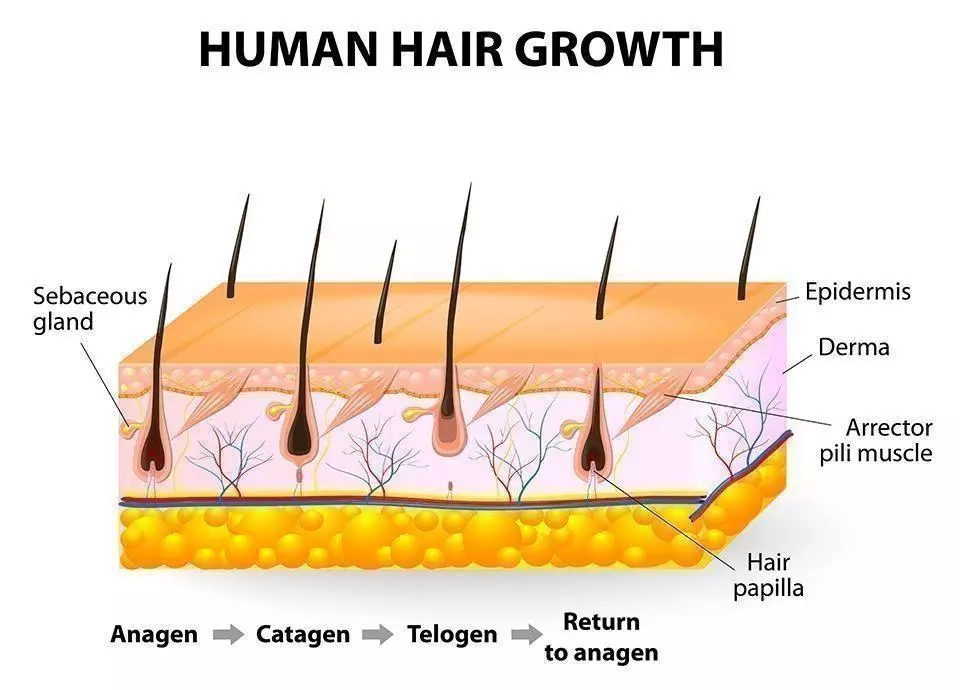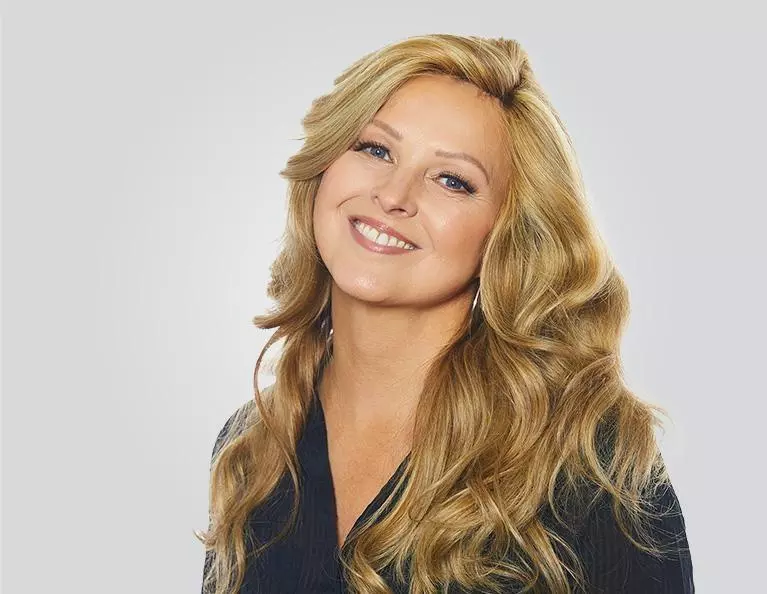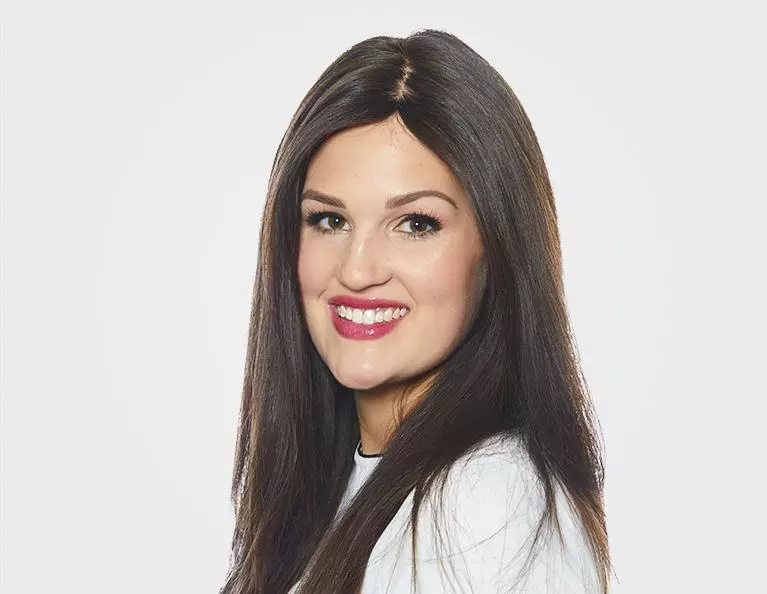Telogen Effluvium (TE) is the second most common form of hair loss seen by hair loss professionals. In order to understand this type of hair loss, it is important to understand the hair growth cycle. There are 3 stages of hair growth: Anagen,Catagen and Telogen.
In the Anagen stage, the cells at the root of your hair are dividing rapidly and that process of division is what causes your hair to grow. During the Catagen stage, your hair is slowly transitioning to a full grown hair, also known as a club hair that will no longer grow. At the Telogen phase, the hair follicle has become a club hair and is fully grown. The club hair is the final product of hair growth and it is natural to see 50 to 100 club hairs shed daily.

In an average head of hair, the anagen, catagen and telogen hair ratio is: 90% of all hairs are in the anagen phase (hair growth), 1-2% are in the catagen phase (transitional) and 8%-9% are in the telogen phase (shedding).
Telogen Effluvium (TE) is a form of hair loss that results when the anagen, catagen, and telogen ratios are disrupted skewed toward the telogen phase resulting in excessive hair shedding.
- Why TE is a problem - people with TE notice a diffuse thinning of hair over their entire scalp. It is common, however, for the top of the head to lose more shafts than the sides or back.
- Why TE sufferers have hope - the hairline, for a TE sufferer, typically remains in place (will not recede), and the hair loss is not complete. Even better, TE may be reversible in any of its three forms.
3 Types of Telogen Effluvium (TE)
Trauma or Shock
Hair follicles don't like being shocked any more than people do. An environmental shock such as undergoing general anesthesia for surgery or an emotional or physical stress can throw-off the delicately timed phases of hair growth. If the environmental shock is temporary, this short term form of TE can last about 6 to 9 months, and the TE sufferer may see normal hair thickness return in approximately one year.
Hair Hibernation
Sometimes hair follicles enter the telogen state and rest longer than they are supposed to. Like a bear sleeping during the winter, the hair follicle may fall into a hibernation state over a prolonged period, likely due to a chronic trigger factor. Not much shedding is noticed, but the hair will thin out over time.
Workaholic Follicles
Busy hair follicles do not always use their earned vacation days. Instead, the hair follicles may continue producing hair. Eventually the hair follicles may “burn out” and produce thin, weak fibers that easily shed thus causing you extremely thin hair.
TE Triggers and Possible Underlying Causes
- Vaccinations and medications may cause a temporary environmental shock,
- Crash dieting, or a diet deficiency (diet deficiency is more common in third world countries, however, some doctors point to the fact that people eat less red meat than previously, or none at all (switching from a meat rich diet to a vegetarian/vegan diet),
- Physical trauma such as a car accident, emergency surgery and broken limbs,
- Chronic emotional stress, and chronic illnesses
- Ingestion of Toxins (found in the air, food or water).
- If you’re a woman, you may have a change in hormone levels after giving birth (most often hair re-grows quickly once the hormone levels return to normal).
Treatment for TE
The most widely used treatment for short term TE is patience. It is not easy to exercise patience but if your doctor diagnoses you with TE, your hair thickness will return with time. There are hair therapy/treatments that can be implemented to stimulate hair growth and decrease excessive shedding.
Overall, the best plan for long term hair loss is to proactively identify the underlying causes or factors and seek treatment. For example, if a diet deficiency, chronic stress, or thyroid imbalances are detected as the triggers for your TE then a treatment plan for those conditions may allow hair growth to go back to normal. If the underlying cause/trigger for your TE is not found, many doctors recommend hair growth stimulants such as Low Level Light Therapy, Minoxidil or scalp and trichology treatments. For more information on how to treat hair shedding, reach out to the team at Unique Hair Concepts for a free, private consultation.






